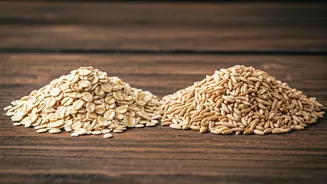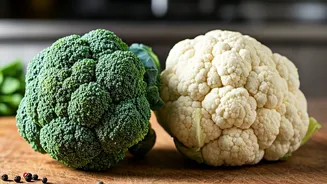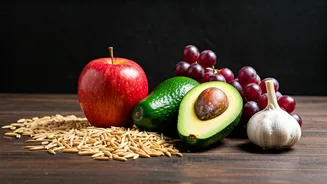Oats: A Staple
Oats, a widely consumed whole grain, offer a range of health advantages due to their rich fiber content and valuable nutrients. Understanding the various
types of oats is key to tapping into these benefits fully. Among the most common are rolled oats and steel-cut oats, each presenting a different approach to the grain and affecting its cooking time and nutritional profile. The processing method greatly impacts the texture and how your body processes them. Knowing these differences helps consumers tailor their oat intake to their unique health objectives and culinary desires. This will help consumers make an informed choice to maximize their health returns.
Rolled Oats Exposed
Rolled oats, often called old-fashioned oats, result from a straightforward process: the oat groats (the entire oat kernel) are steamed and then flattened between rollers. This method leads to thinner flakes that absorb water quickly, shortening the cooking time. They tend to cook faster than steel-cut oats, needing only a few minutes to become ready to eat, and have a chewier texture. These oats are very versatile in the kitchen. You can utilize them in porridge, granola, baked goods, and even smoothies. Their quick cooking time and widespread availability make them a popular choice for a quick and easy breakfast. However, this processing may influence their glycemic index, making them a bit more susceptible to causing rapid blood sugar spikes, which is a thing to consider for individuals with diabetes.
Steel-Cut Oats Unveiled
Steel-cut oats, also recognized as Irish or Scottish oats, undergo a different processing method. Instead of being flattened, the oat groats are chopped into several pieces with steel blades. This minimal processing leaves them with a hearty texture and a nutty taste, requiring more time to cook. Due to their intact nature, steel-cut oats take longer to cook—typically 20 to 30 minutes on the stovetop—resulting in a chewier consistency. This longer cooking time may make them more appealing to those who value a more substantial breakfast. Because they digest more slowly, steel-cut oats provide a more gradual release of glucose into the bloodstream, thereby resulting in stable energy levels. This attribute is especially beneficial for those looking to manage their blood sugar effectively. These oats are commonly used in porridge and are ideal for absorbing flavors when cooked with other ingredients. Their high fiber content aids in digestion, and keeps you feeling fuller for a longer time.
Nutritional Comparison
Both rolled oats and steel-cut oats offer a solid nutritional profile, packed with soluble fiber, particularly beta-glucan, which is known to lower cholesterol levels and promote heart health. However, the processing methods may slightly change the nutrients. Steel-cut oats, because of their minimal processing, retain more of their natural fiber and have a lower glycemic index, which means they release glucose more slowly into the bloodstream. Rolled oats, while still nutritious, might cause a faster blood sugar response due to their processing. Both varieties are excellent sources of vitamins and minerals, including manganese, iron, and zinc. Choosing between them often depends on personal taste, time constraints, and individual dietary needs. Steel-cut oats are often considered superior for maintaining steady blood sugar levels and offering a sustained energy release.
Cooking & Uses
The cooking time and ideal application of each oat type vary significantly. Rolled oats are a champion of convenience, quickly prepared in a matter of minutes with hot water or milk. Their ability to readily absorb liquids makes them perfect for porridge, overnight oats, and baked goods, providing a smooth and creamy texture. Steel-cut oats, requiring a longer cooking time, often demand simmering on the stovetop for around half an hour. This preparation results in a chewier texture, ideal for hearty breakfast porridges and dishes that benefit from a nutty flavor. They are also great for adding substance to soups and stuffings. Consider your lifestyle when selecting between the two. Opt for rolled oats for a speedy breakfast or use steel-cut oats if you have the time for a richer, more textured meal. These differences also influence their use in different culinary creations.
Making the Right Choice
The best oat choice boils down to your individual needs and tastes. For those prioritizing speed and convenience, rolled oats are the go-to option, ideal for quick breakfasts and diverse recipes. Individuals with diabetes or those aiming for stable blood sugar levels should consider steel-cut oats due to their slower glucose release. Taste and texture also play a role; steel-cut oats offer a chewier and more robust flavor profile, while rolled oats provide a smoother, less intense taste. Consider how you like your oats, how much time you have to cook them, and your health objectives when selecting. Ultimately, both types are beneficial and can fit into a balanced diet.











